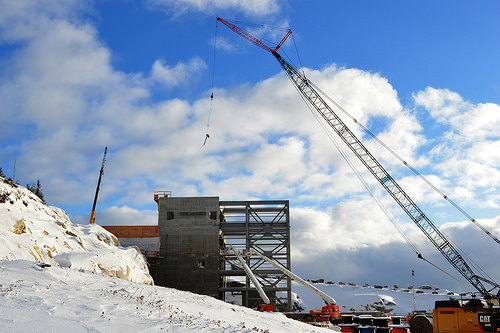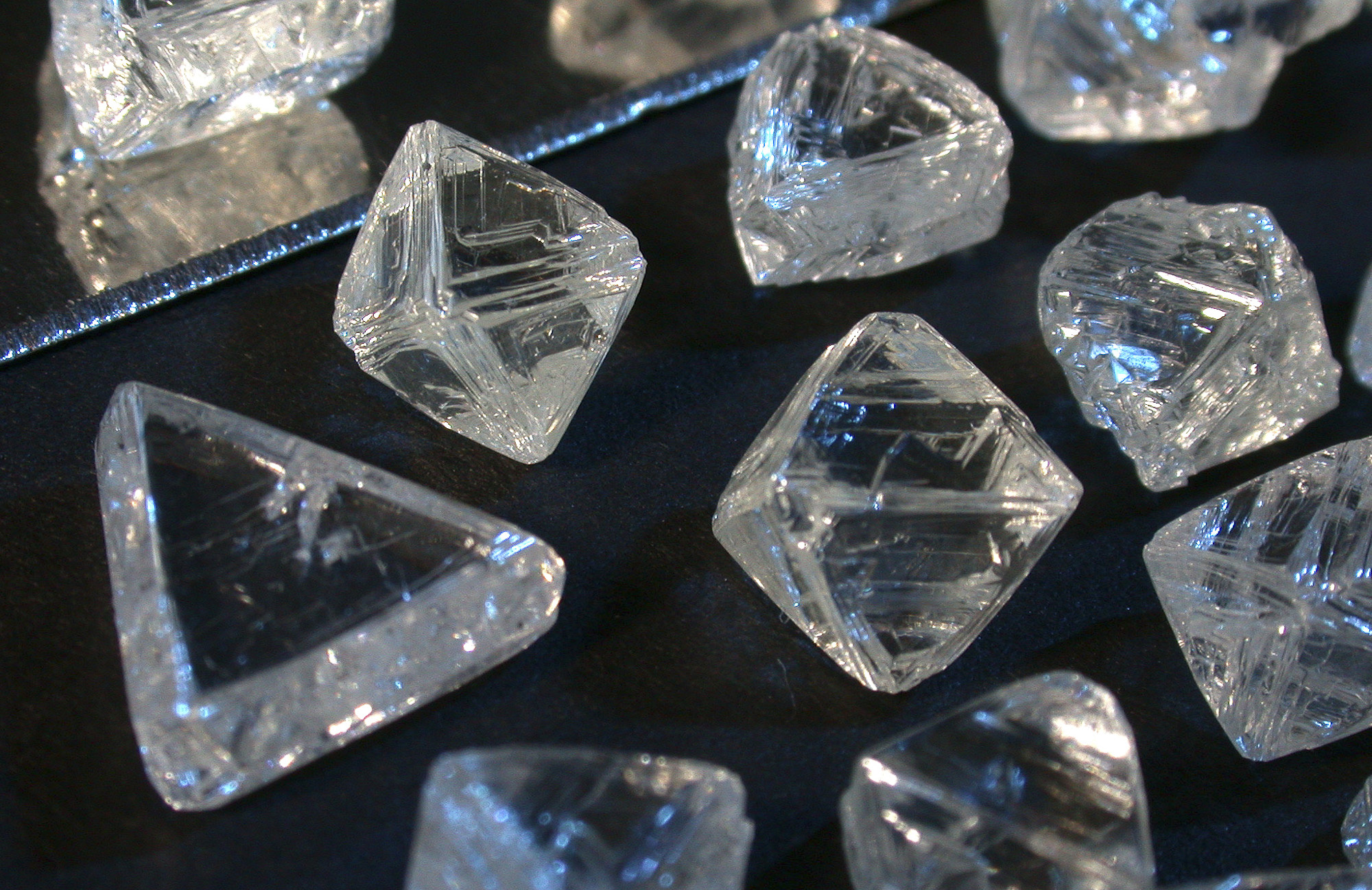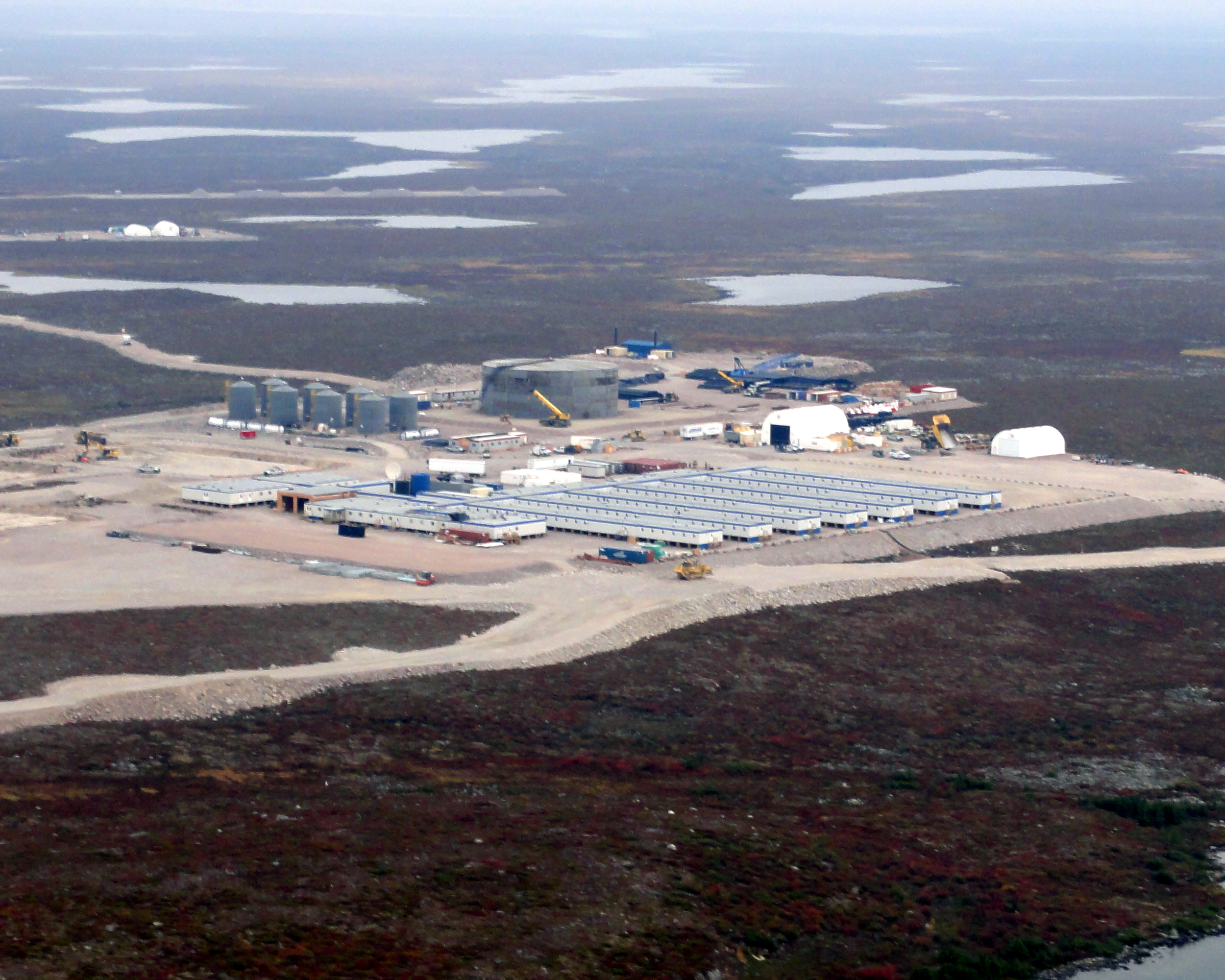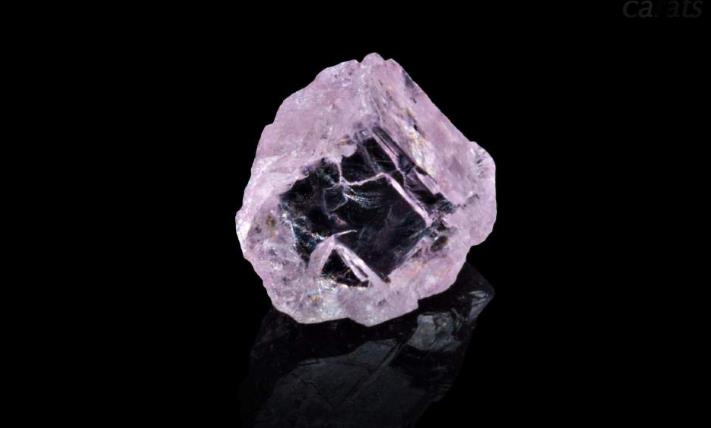
Stornoway's Renard will be Quebec's first diamond mine when it achieves commercial production, scheduled for 2017. (Stornoway Diamonds photo)
So far in 2015, the state of the global diamond industry has been closely aligned with the posture of the global economy, as it so often is, and should be.
The developed nations of the world are growing, but at uninspiring rates, and with inflation subtle, central banks continue to side with easy policy, too deterred by economic data to do otherwise. Emerging market growth has slowed, led by China transitioning from an investment and export nation, to one more driven by consumer spending, service, and innovation.
The result in the diamond industry has been an overhang of low-to-medium-quality polished diamonds in the market for about a year now. U.S. diamond demand growth has been relatively healthy over that time, but demand growth in China, parts of Europe, and Japan has been softer, congruent with their economies.
Recent financial market weakness in China, in particular, has directly impacted demand for diamonds. The relatively wealthy primary Chinese diamond consumer tends to own stocks and other investments, and as their invested wealth has declined in 2015, so has their propensity to buy more luxury items, diamonds, of course, included.
 De Beers rough diamond parcel. Source: De Beers Group.
De Beers rough diamond parcel. Source: De Beers Group.
De Beers
In the first 10 months of the year, De Beers has responded to market weakness by taking a two-pronged approach: cutting production and lowering prices.
De Beers cut its 2015 diamond production plan by 12% since the start of the year. Initial full-year 2015 guidance was 32-to-34Mcts (million carats), which was reduced to 30-to-32Mcts in late April, and most recently further reduced to 29Mcts on October 22nd (as a comparative, actual full-year production was 32.6Mcts in 2014 and 31.2Mcts in 2013). The company specifically curtailed production at its Jwaneng and Venetia tailings operations, in Botswana and South Africa respectively.
In addition to the production curtailment, the company cut prices ~10% at its sight in late August. However, the company left prices unchanged at its subsequent sight in early October, and some buyers responded by rejecting up to half of their parcels offered; an indication that additional price cuts are probably still necessary in the current environment for some mid-stream clients to remain economically viable. Anecdotes suggest that in some cases it is still cheaper to buy polished on the open market then it is to buy rough directly and cut into polished.
De Beers is scheduled to host two more sights before the end of 2015, on November 2-6th, and December 7-11th, in Gaborone.
ALROSA
Rather than curtail production like De Beers, Russia’s ALROSA (RTS: ALRS) is instead building up rough inventory, by approximately 20% YTD (year to date) as of September.
ALROSA, the world’s largest diamond producer by volume, also on pace to be the largest producer by value in 2015, has actually projected a production increase of 5% to 38Mcts this year from an actual 36Mcts in 2014. The production increase primarily coming from ramping-up of new mines, specifically Karpinskogo-1 and Botuobinskaya (shown below), as well as, efficiencies at seasoned mines, such as Mir underground.
ALROSA realized an average price-per-carat of $115 in Q3, versus $114 in Q2 (+0.9%), and $127 (-9.4%) at the start of the year. Although, the Q3 over Q2 number can be misleading as ALROSA offered a higher quality product mix in Q3 compared to Q2, skewing the average price-per-carat figure.
On a like-for-like basis, ALROSA's average price-per-carat was down 14% YTD as of October 21st, after having lowered prices 3% in February, 3% in May, and 8% in August through October. Even with the price decreases, some contracted-buyers rejected up to the allowable 50% of product offered, similar to what was seen at the latest De Beers sight.
ALROSA will host two more sales before year-end in Moscow on November 10-13th, and December 8-15th (8-14th and 14-15th).
Rio, Petra, Lucara
As of October 16th, Rio Tinto (LSE: RIO) is following suit with De Beers, intentionally cutting production by a proposed 10% to 18Mcts, from an initial 2015 production plan of 20Mcts, by halting processing at its Argyle mine in Q4. Lower-to-mid-quality diamonds, which represent the large majority of Argyle output by volume, have been impacted the greatest in the weak price environment.
Rio's 40% partner in Canada's Diavik mine, Dominion Diamond Corp (TSX: DDC), sold Diavik diamonds for $105 per carat in Q3, which compares to $110 in Q2 (-4.5%) and $111 (-5.4%) at the start of the year. Initial full-year 2015 production guidance for the mine was 6.7Mcts, but as of October 15th, guidance was slightly raised to 6.8Mcts.
Rio has one more “Select Diamantaire core sale” scheduled in 2015, for December 14-18th in Antwerp.
The world's 5th largest commercial producer, Petra Diamonds (LSE: PDL), saw prices down ~9% at an October tender, on a like-for-like basis relative to May and June sales. Approximately 10% of the diamonds offered did not meet the minimum accepted price and went unsold.
The average price-per-carat achieved at the company’s Kimberly underground and Finsch mines were particularly weak, down 29% and 22%, respectively, as recently recovered product mixes were skewed lower by a higher concentration of “finer” stones.
Petra has been incrementally increasing annual production volume from just over 2Mcts in 2012, to a guided 3Mcts this year, to a forecasted 5Mcts by 2019.
Petra will host one more tender before year-end, scheduled to close in early December in Antwerp.
Due to the high relative variance of quality produced by Lucara Diamond Corp's (TSX: LUC) Karowe mine in Botswana, and consequently, the ability of high-quality stones to significantly impact average price per carat figures, like-for-like pricing figures for Lucara are difficult to come by. However, as of August 11th, the company's average price-per-carat figures were up 2.8% YTD at $662, up from $644 at the start of the year. Higher-end rough has outperformed low-to-mid-quality product so far this year.
Lucara is hosting an “exceptional” diamond tender in Gaborone on November 12th. 13 diamonds will be offered for sale including an 8-carat pink stone (shown above). The company will also be hosting one more regular tender before year-end, scheduled to conclude on December 10th in Gaborone.
Diamond Mining Stocks
With rough diamond prices down over 12% YTD, according to the Zimnisky Global Rough Diamond Price Index, share prices of diamond miners have been punished by investors. Year to date, ALROSA is down 18%, Dominion is down 34%, Petra is down 58%, Lucara is down 24%, and Gem Diamonds (LSE: GEMD) is down 44%.
Emerging producer Mountain Province Diamonds (TSX: MPV) is down 23% YTD, and is currently trading at a 3-year low, even though the company has since fully financed it's portion (partnered with De Beers) of the Gahcho Kué diamond project in the Northwest Territories Canada. The project’s construction is over 75% complete (shown below), with initial production estimated to commence around this time next year. Gahcho Kué is the largest new diamond project in the global pipeline and will rank a top-10 project by volume and value once fully ramped up.

Aerial view of the Gahcho Kue construction site in Northwest Territories. (Mountain Province Diamonds photo)
Also worthy of note, Mountain Province’s exploration spinoff, Kennady Diamonds (TSX-V: KDI), successfully closed a C$48M financing in October, which will cover the company's activities through 2017. The raise, impressive on a relative basis, was equivalent to 35% of the company's C$140M market cap. The stock is down 35% YTD.
Stornoway Diamonds (TSX: SWY), which is building Quebec’s first diamond mine, is the standout in the diamond mining space so far this year with the stock up 26% YTD (although the stock did close at multiyear lows at the end of last year). The company is fully financed through construction of its Renard mine, which is scheduled to begin commercial production in the first half of 2017.
For the remainder of 2015 and into early 2016, diamond prices will be sensitive to the actual resulting demand of the global holiday season, beginning with Diwali in November, Christmas in December, and concluding with the Chinese New Year in February.
Given the current precarious state of the industry, diamond manufacturers and retailers have been preparing for this years holiday season more conservatively than in years past by keeping inventory stocks lean. A stronger than expected holiday season could clear out lighter than usual inventories, making for more aggressive buying in spring/summer of 2016, which, coinciding with less rough coming to market via De Beers, ALROSA, and Rio, could mark a trajectory shift in prices.
At the time of writing author Paul Zimnisky held a long position in Lucara Diamond Corp and Mountain Province Diamonds. Zimnisky is an independent New York-based diamond analyst whose website is www.PaulZimnisky.com. The author has made every effort to ensure the accuracy of information provided, however, accuracy cannot be guaranteed. Information on this site is strictly for informational purposes and should not be considered investment advice. All investors need to do their own due diligence.






















